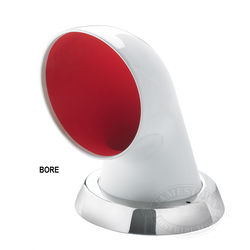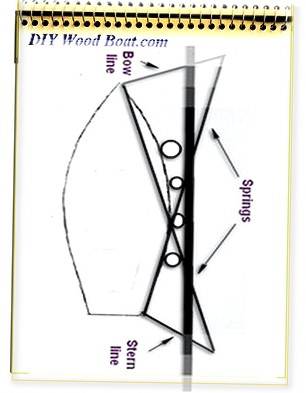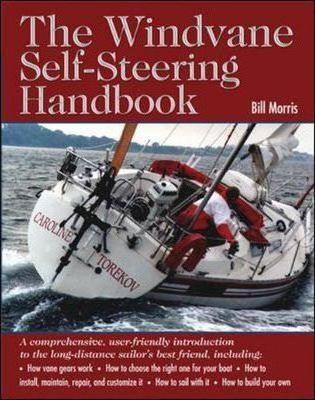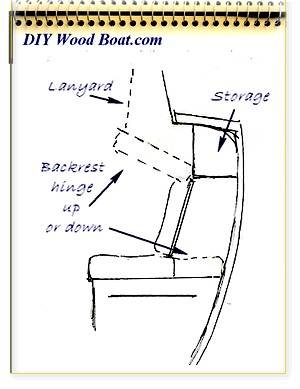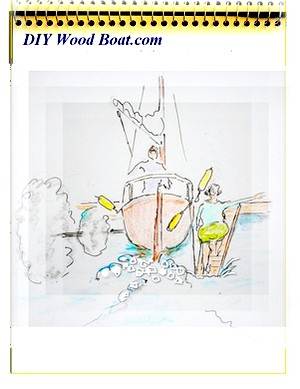- Home
- Your Boats
- Storage
Storage and Locker Space Onboard.
Organizing storage space on small wooden boats can, with a bit imagination be easily resolved.
There are numerous folk who live, full time on quite small craft and yet still manage to find room for their possessions.
Of course, the smaller the boat the more selective one must be in choosing one’s possessions.
Most boats have lots of wasted space in all those odd shaped corners.
With a bit of imagination many of those nooks can be turned into valuable extra storage.
One of the advantages of a wooden boat is that it only takes a bit of relatively simple joinery to get organised.
The other advantage is that as wood is an excellent insulator, condensation is not nearly as much a problem as it is for those unfortunate enough to sail in plastic boats.
Though it shouldn’t be ignored, having adequate ventilation and air flow is important on any boat.
Onboard Needs
Clearly
the amount of storage space needed will
depend on the time you and your crew are going to spend on board.
However, even if you are planning to live
aboard you will
have to come to terms with the fact that you are most unlikely to have
anything
like as much storage space as you would have in a house.
Very few boat designers and boat builders provide nearly enough storage
for the
number of people thy claim there boats can sleep.
While on a wooden boat there are innumerable spaces and ingenious
methods for
increasing storage capacity, you should also adopt a critical attitude
to the
stuff you think you need on board.
One of the joys of cruising
on a small boat is
the simplistic lifestyle that a minimalist attitude can evoke.
Life
onboard, even if only for a day
sail will be much more comfortable
if you
also adopt a an attitude of tidiness.
If everything is stowed in its proper place it will be easier to find
when it
is needed, and having everything in its proper place will keep the
working
areas of the boat free.
It is also imperative to have everything stowed safely to prevent
breakages or
injury.
Fiddles are the normal method for keeping stuff securely on shelving.
However,
having deep enough fiddles can make the shelf unusable.
Rather than resort to doors to secure these for sea, bungee cord can be hooked across books, cargo netting can be stretched across or even removable wooden bars can be used, as long as you remember to secure them before setting off.
Ventilation
Even
though a wooden boat
suffers less from
condensation, good ventilation
is still a
priority.
It is astonishing amount of moisture generated just from you being on
board and
besides a boat’s natural environment is a very moist one.
Wherever possible put vents in all your lockers.
This could be something as simple as having a finger hole in the front for access to the locker latch.
To facilitate air circulation avoid the temptation to take the
horizontal
surfaces such as shelves and locker floors all the way to the inside of
the
hull planking.
If the shelves stop at the inner edge of the frames there will be a gap
between
there and the planking which will allow air to flow vertically, it will
also
make fitting the shelf simpler.
To prevent small objects slipping down the gap, fit a deep fiddle along
the
back edge.
Other issues
There is more to organising
your storage space
than just hiding everything away.
Where you place stuff also has safety and performance implications.
Clearly the fewer items strewn about the cabins and deck the better,
however
there are items which need to be handy, safely stowed but easily
reached when
needed.
The boat’s trim also needs to be considered.
As much heavy equipment as possible should be stowed amidships.
The ends of the boat should be saved for lighter equipment.
Too much weight in the ends will increase the boat’s tendency to
pitch.
Stowage across the beam also needs to be balanced so she floats upright.
Clothes
Having a minimum of possessions on
board is one
way to solve the storage issue.
However, not having enough clothing of the correct type is a false
economy.
Remember it is usually colder out at sea and it is easier to wrap up
and stay
warm than to get warm again once you are cold.
Fortunately, there is today a wide range of light weight foul weather
gear and
leisure clothing available.
I must admit to preferring to wear natural fibres, however there are
many
modern synthetic garments which are better than traditional fabrics
especially
in damp conditions.
Cotton may be comfortable in hot weather but it is also good at soaking
and
retaining moisture.
Those denim jeans for instance will quickly become damp and be the
devil to dry
properly.
Leather shoes will also be a problem unless you can keep them clean and dry and stored in a well ventilated locker.
A hanging locker is fine for allowing foul weather gear to drip.
However, clothing left hanging for any length of time while the boat is
in
motion will wear out from chafe unless restrained.
Most clothing is better stowed ‘navy style’, rolled up and kept in
the lockers.
While items which are used regularly should be easy to access other
items can
be kept rolled up in waterproof bags.
"Space Bags" are an ideal solution for any garments which are likely to
be kept
stowed for long periods.
The idea of the "Space Bag" is that all the air can be sucked out using
a
vacuum cleaner then the bag sealed.
Use the out of the way nooks for the items tat are rarely used keeping the more easily accessed lockers and drawers for regular use.
affiliate linksFood Storage
Food
is another area where it doesn’t pay
to be too parsimonious.
You can save on the space needed for cooking utensils by using a
pressure
cooker, it will also save on cooking fuel, a complete meal can be
rustled up in
one pan and it will save on washing up too.
With a little bit of planning, working out your day to day menus, you
can keep
the immediate needs handy while tucking any extras into the nooks.
Hanging netting is one of the best ways to store fresh fruits and
vegetables.
The netting will allow plenty of air circulation and allow easy
inspection so
anything which is beginning to go off can be either used first or
jettisoned.
However as with any hanging storage it should be in a position where it
won’t cause damage to the contents if it is allowed to swing while at
sea.
You can save some food storage space by using dehydrated foods but you will need to carry extra fresh water to rehydrate it.
affiliate links
